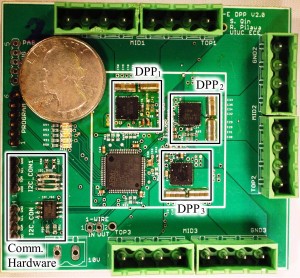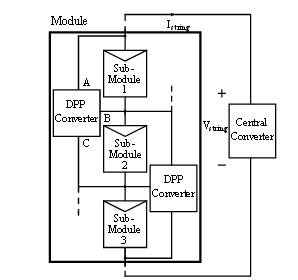Sub-module Differential Power Processing for Photovoltaic Applications

Figure 17: Hardware prototype
Shibin Qin with adviser R. C. N. Pilawa-Podgurski
Power converters are required in solar-energy harvesting systems for maximum power extraction due to non-linear characteristics of solar photovoltaic (PV) modules. Differential power processing (DPP), with a basic structure illustrated in Fig. 16, is studied. PV modules are connected in series for voltage step-up and use differential power converters to transfer only the differential power between every two neighboring modules for maximum power point tracking. Because the power converter needs to process only the differential power, a substantial reduction in power loss can be achieved. In addition, size reduction, high system reliability, and reduced cost can be achieved.
New challenges in power converter design and control at both the system and local converter levels are created by DPP architecture and addressed in this work. A distributed MPPT algorithm that requires no local current sensing and minimum communication is developed. A hardware prototype that achieves size reduction to the point of PV junction box integration is implemented (as shown in Fig. 17) and tested in a controllable indoor test setup that enables replications of real-world partial shading conditions. A substantial increase in total system energy capture compared to module-level MPPT solutions has been experimentally verified.
This research is supported by U.S. Department of Energy ARPA-E Award DE-AR0000217.
